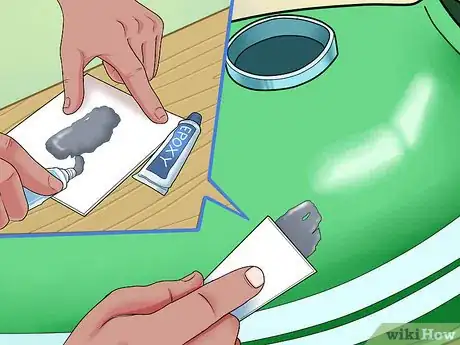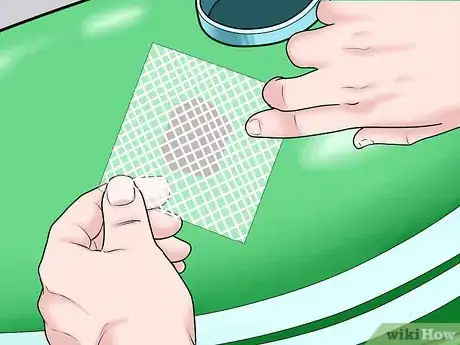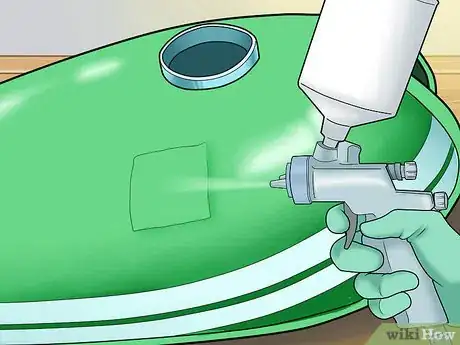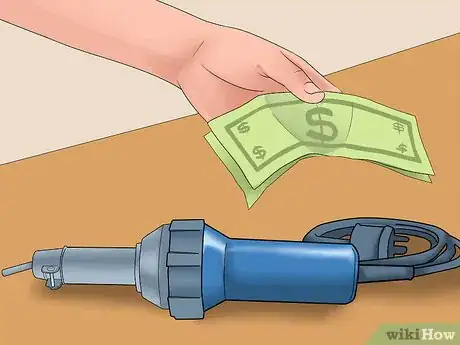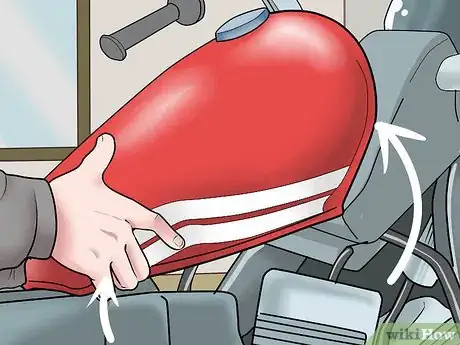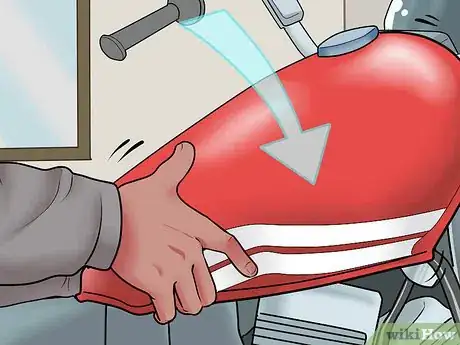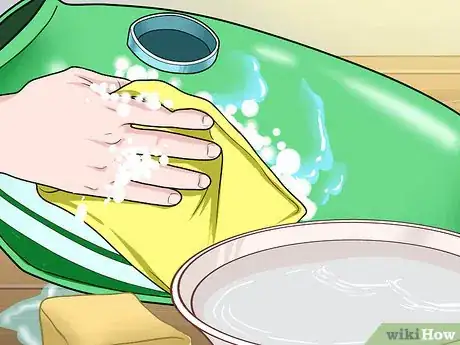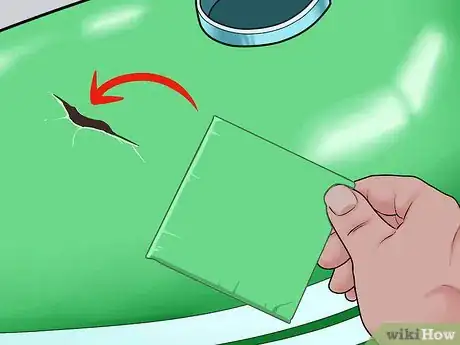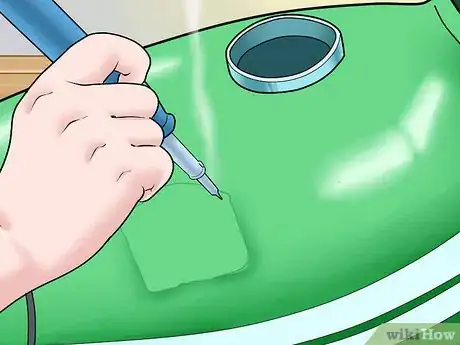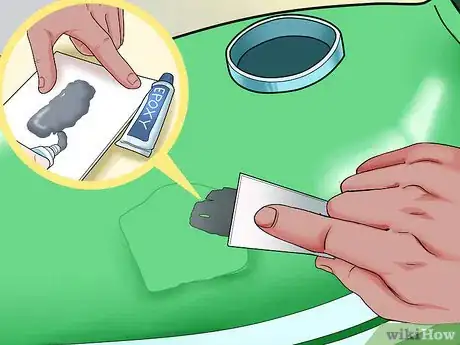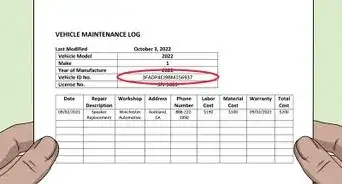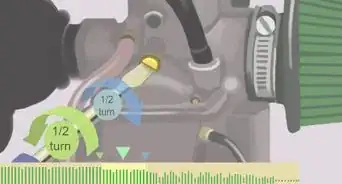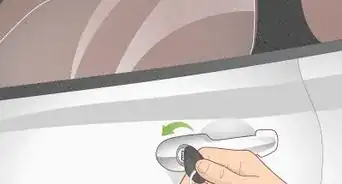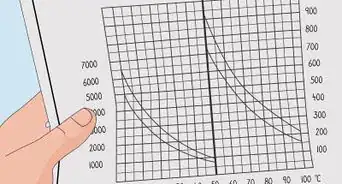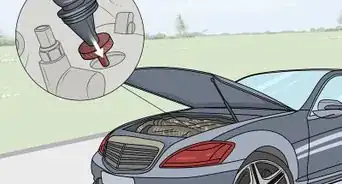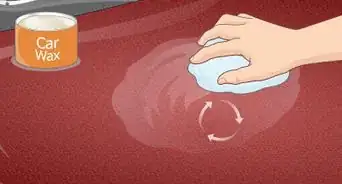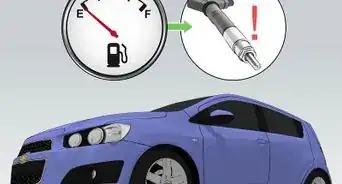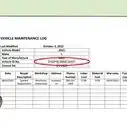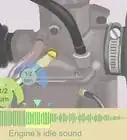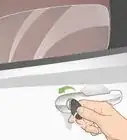This article was co-authored by wikiHow staff writer, Eric McClure. Eric McClure is an editing fellow at wikiHow where he has been editing, researching, and creating content since 2019. A former educator and poet, his work has appeared in Carcinogenic Poetry, Shot Glass Journal, Prairie Margins, and The Rusty Nail. His digital chapbook, The Internet, was also published in TL;DR Magazine. He was the winner of the Paul Carroll award for outstanding achievement in creative writing in 2014, and he was a featured reader at the Poetry Foundation’s Open Door Reading Series in 2015. Eric holds a BA in English from the University of Illinois at Chicago, and an MEd in secondary education from DePaul University.
wikiHow marks an article as reader-approved once it receives enough positive feedback. In this case, several readers have written to tell us that this article was helpful to them, earning it our reader-approved status.
This article has been viewed 430,399 times.
Learn more...
Plastic gas tanks are in high demand in the world of motorcycle racing and ATV enthusiasts. A plastic gas tank can weigh less than half of a comparable metal gas tank and it is easy to mold into shapes to fit odd configurations. Seamless gas tanks seldom leak and are impervious to the rust and corrosion that affect metal tanks. If a plastic fuel tank does sustain small holes or tears, there are several fairly easy ways to make the repair.
Steps
Seal Plastic Gas Tank with Epoxy Glue
-
1Drain the gasoline from the tank and allow it to dry. Sand the area around the hole or crack, and clean the area with a shop cloth saturated with rubbing alcohol.[1]
-
2Mix the 2 part epoxy together and apply all around the perimeter of the opening.[2] Cut a fiberglass patch large enough to cover the opening and overlap it.Advertisement
-
3Place the fiberglass patch over the hole and press into the epoxy. Apply more epoxy to the patch and surrounding area, pressing firmly to saturate the patch.
-
4Allow to dry, sand the patched area smooth and spray paint with a plastic paint if desired.
Seal Plastic Gas Tank with a Plastic Welder
-
1Buy or rent a plastic welder. Tell the salesperson what you are doing with it to ensure that you get the correct rods.
-
2Remove the plastic gas tank from the vehicle, and set it up in a secure welding area. Drain the gasoline from the tank, and allow it to dry both inside and outside. Don protective eye gear, a welding helmet and welding gloves.
-
3Use a plastic welding rod made specially for this purpose, and fill in the crack or hole. Start at an edge and run the bead completely around the opening. Then begin crossing over the hole, allowing the rod to fill in the hole completely.[3]
-
4Allow the weld to set up, sand it smooth and, if desired, paint it with plastic spray paint.
-
5Replace the repaired plastic fuel tank on the vehicle.
Seal Plastic Gas Tank with a Soldering Gun
-
1Drain the gas tank, and clean it inside and out with soapy water.[4] Lightly sand the perimeter of the area to be repaired.
-
2Cut a plastic patch, made of a similar material to the gas tank, slightly larger than the hole to be repaired.
-
3Heat up an electric soldering gun, and drag it around the edge of the crack to create a trench. Move the gun from side to side to push the plastic back into the trench. While the plastic is still soft from the soldering, lay the plastic patch over the area. Continue moving the soldering gun over the area to smooth the plastic, and fuse them together.[5]
-
4Allow to cool and dry completely. Mix a 2 part epoxy glue, and cover the entire area of the patch.[6] Allow to set up, sand and spray on a coat of plastic paint if desired.
Community Q&A
-
QuestionIs Flex Seal gasoline resistant?
 wikiHow Staff EditorThis answer was written by one of our trained team of researchers who validated it for accuracy and comprehensiveness.
wikiHow Staff EditorThis answer was written by one of our trained team of researchers who validated it for accuracy and comprehensiveness.
Staff Answer wikiHow Staff EditorStaff AnswerAccording to the manufacturer’s website, Flex Seal is not a good choice for sealing gasoline tanks. It’s not made to withstand a lot of heat or pressure, and it’s not recommended for use with flammable liquids, such as gasoline.
wikiHow Staff EditorStaff AnswerAccording to the manufacturer’s website, Flex Seal is not a good choice for sealing gasoline tanks. It’s not made to withstand a lot of heat or pressure, and it’s not recommended for use with flammable liquids, such as gasoline. -
QuestionHow do you fix a plastic gas tank on a lawnmower?
 wikiHow Staff EditorThis answer was written by one of our trained team of researchers who validated it for accuracy and comprehensiveness.
wikiHow Staff EditorThis answer was written by one of our trained team of researchers who validated it for accuracy and comprehensiveness.
Staff Answer wikiHow Staff EditorStaff AnswerA fiberglass repair patch will work well for this job. Drain the tank and let it dry completely first, and don’t forget to sand the area around the leak or hole so that the adhesive compound can adhere properly.
wikiHow Staff EditorStaff AnswerA fiberglass repair patch will work well for this job. Drain the tank and let it dry completely first, and don’t forget to sand the area around the leak or hole so that the adhesive compound can adhere properly. -
QuestionWill Teflon tape seal in gasoline?
 wikiHow Staff EditorThis answer was written by one of our trained team of researchers who validated it for accuracy and comprehensiveness.
wikiHow Staff EditorThis answer was written by one of our trained team of researchers who validated it for accuracy and comprehensiveness.
Staff Answer wikiHow Staff EditorStaff AnswerNo, the gasoline will eventually break down the tape. If you want a quick and easy fix, a fiberglass patch is a better option.
wikiHow Staff EditorStaff AnswerNo, the gasoline will eventually break down the tape. If you want a quick and easy fix, a fiberglass patch is a better option.
Warnings
- A plastic welder is safe around gasoline and gasoline fumes, as it has a very high flash point. However, use common sense and do not use near open flames.⧼thumbs_response⧽
Things You'll Need
- Plastic patches
- 2 part epoxy glue
- Fiberglass patch
- Sandpaper
- Shop cloth
- Rubbing alcohol
- Plastic spray paint
- Plastic welder
- Welding rods
- Welding helmet
- Welding gloves
- Eye protection
- Soldering gun
References
About This Article
To seal a plastic gas tank with epoxy glue, start by draining the tank and letting it dry. Then, sand the area around the hole or crack with coarse grit sandpaper, and clean it with a cloth soaked in rubbing alcohol. Next, mix the epoxy glue, apply it over the opening, and press a fiberglass patch over the epoxy. Let the epoxy dry, then smooth out any bumps or unevenness with sandpaper, and spray paint with plastic paint if desired. To learn more, including how to seal a plastic gas tank with a plastic welder or soldering gun, scroll down.

